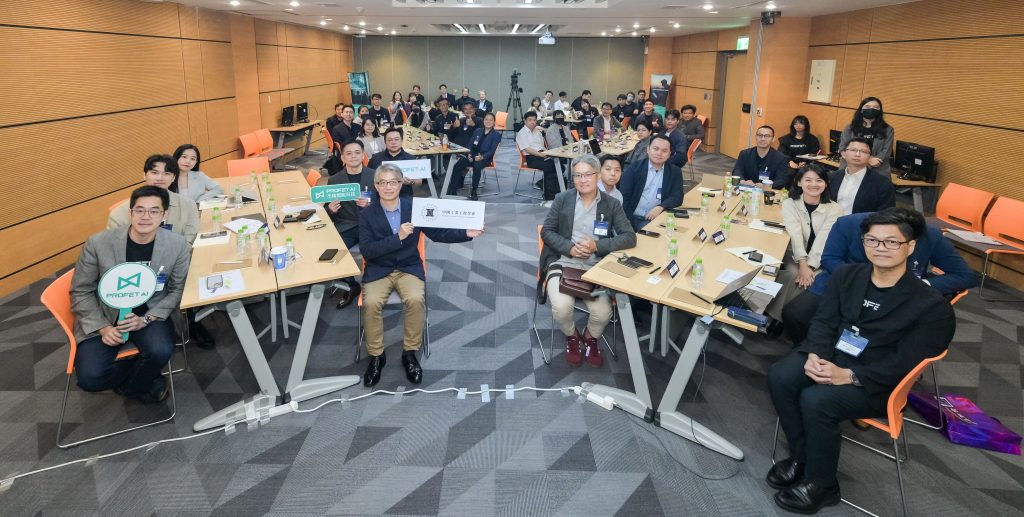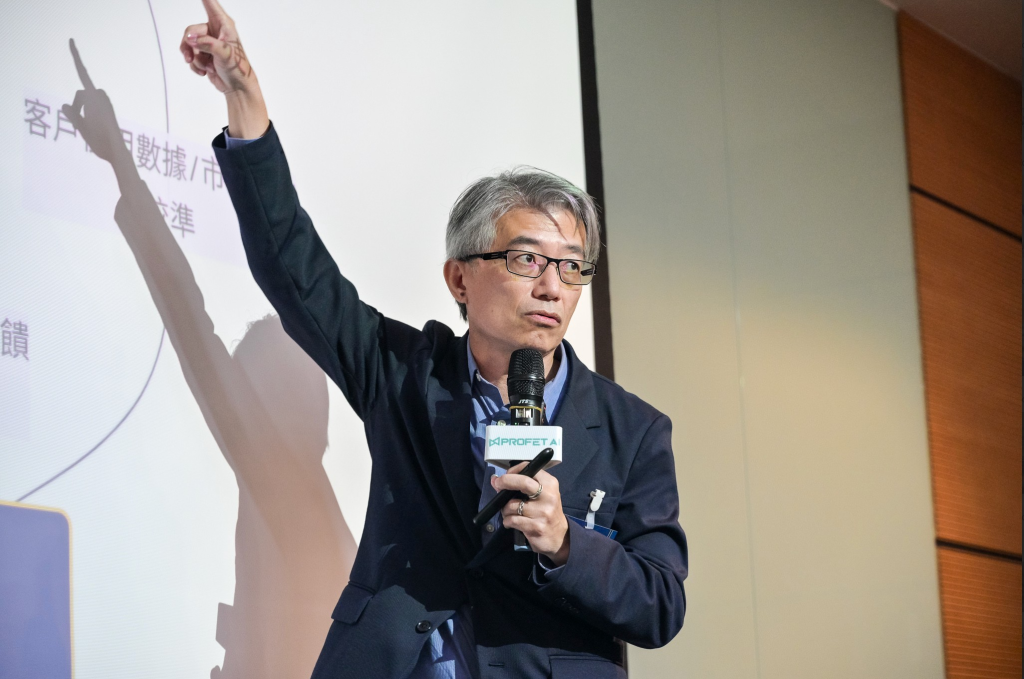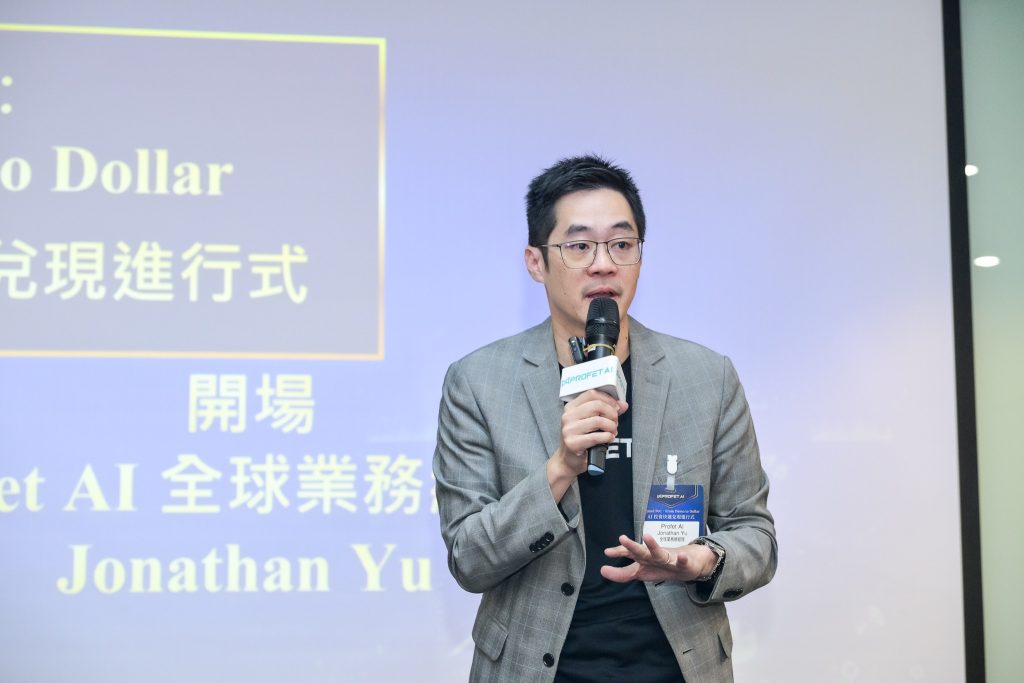AI Enters the “Second Half”: How Profet AI Turns Investment into Real Productivity
From Proof of Concept to Proven Performance: How Profet AI Empowers Manufacturers to Turn AI Investment into Real-World Productivity

Once, Blockbuster held the world’s largest trove of user data but still lost to Netflix, who began as a mail-order DVD service. Nokia, the longtime ruler of the mobile phone market, fell to Apple amid the smartphone revolution. These stories remind us: in waves of technological change, seeing the shift but failing to act is often riskier than not seeing it at all.
Profet AI’s Global General Manager Jonathan Yu notes that AI stands at a similar inflection point today: “Whoever can move AI beyond proof-of-concept—integrating it into real decisions and processes—will take the lead in the next generation.”
On October 29, Profet AI hosted “Beyond PoC: From Demo to Dollar — The Ongoing Realization of AI Investment,” bringing together academic experts and industry partners to explore how AI can move from concept validation to value creation.
Professor Morris Fan, Dean of the College of Management at NTUT and Chairman of the Chinese Institute of Industrial Engineers, analyzed the global gap between AI theory and practice.
James Yang, Executive Assistant to the CEO, shared strategies and challenges in enterprise adoption of generative AI—revealing how companies can turn demos into real, measurable value.
Decoding the World: From AI Theory to Value Realization
“In the past, we said ‘seeing is believing.’ In the world of AI, it should be the other way around—‘to believe is to see.’”
Professor Morris Fan opened with this statement, emphasizing a key mindset for AI adoption: only by believing first can organizations unlock value.
He described the past decade as AI’s “first half.” From AlphaGo’s victory over Lee Sedol in 2016 to AlphaEvolve, which can now generate its own questions and answers, AI has proven superhuman capabilities in specific domains. But the next question for enterprises is: “How do we play the second half?” In other words, no matter how powerful a model is, if it doesn’t integrate into workflows, decisions, or products, it remains stuck in the proof-of-concept (PoC) stage.
True value realization isn’t about the success of a single project—it’s a continuous cycle. Fan outlined three layers for AI implementation:
- Production AI-Landing – smart manufacturing operations
- Operation AI-Landing – intelligent business management
- Product AI-Landing – AI-enabled products
These layers continuously calibrate and reinforce one another: production data feeds product development; market needs loop back into operational decisions—forming a complete, closed-loop system.
Fan also reminded attendees that AI deployment is never “one click and done.” Enterprises must use version control, access management, and health monitoring to ensure long-term stability. Beyond setting realistic goals, they must build human-in-the-loop validation to keep decisions grounded.
He cited a cautionary study: when people rely heavily on AI-generated content, brain activity drops by an average of 47%. “After eight minutes, you forget what you were even writing,” he warned. “Blindly trusting AI earns you zero points. Only those who truly understand processes and data relationships are qualified to talk about AI.”

The Starting Line for Enterprise Gen AI: Exit and Succession
Many companies are racing to invest in AI—but does that guarantee entry to the “second half”?
This was the question explored by James Yang in his session on enterprise-level generative AI.
“PoC was meant to mean Proof of Concept—but it’s become the Prison of Concept,” James declared, pinpointing a widespread issue: countless projects never make it beyond demo stage. According to MIT research, 95% of companies that invest in AI see no tangible return. “If AI is just a chatbot, it’s an island. Only when it connects to processes can it become true enterprise productivity,” he stressed.
James explained that the real goal isn’t to keep AI confined to one department, but to build a corporate AI brain—a system that captures, governs, and applies knowledge across the organization.
Drawing from MIT’s findings, he summarized four traits shared by companies that successfully deploy AI:
- Embed into process – AI must be part of daily operations, not just an FAQ tool.
- Leverage ecosystem – Stop comparing models and frameworks; focus on integration, not reinvention.
- Empower creation – Enable employees to quickly build their own AI agents, rather than routing every need through the CoE.
- Be pragmatic – “When the boss says, ‘Let’s do AI,’ the first thing everyone does is buy GPUs,” Yang quipped. Many firms spend money before identifying the real problems they want to solve.
Following this logic, Profet AI is developing a new generation of connected architectures. Through standardized technologies like MCP (Model Context Protocol), enterprise systems will be able to interact with AI more smoothly—making knowledge-based AI truly actionable.
However, Yang stressed that to turn AI into a corporate asset, two pain points must be addressed: cost and cybersecurity.
He shared a story from his time at MediaTek:
“After API integration, we burned through NT$120,000 worth of tokens per day for two days—NT$240,000 total. That invoice was painful for everyone to see.”
The incident taught him the importance of strict cost and access control when deploying Gen AI platforms.
To that end, Profet AI plans to collaborate with Zentera, a Silicon Valley partner, to co-develop an AI agent management and protection architecture—ensuring that enterprises can deploy Gen AI with cost efficiency and data security.

From Product to Culture: Becoming a Company Where “Knowledge Never Retires”
From global AI trends to enterprise adoption challenges, the conversation ultimately returned to one question:
How can AI become an enduring organizational capability?
Profet AI’s technical team has embedded the idea of “From Demo to Dollar” into its platform design. At the center lies the Enterprise AI Brain, which records, governs, and reuses knowledge.
From AutoML to AILM to AI Studio, the platform helps companies not only solve problems—but also remember how they solved them—transforming AI into an evolving corporate memory that preserves and extends expertise.
Jonathan Yu shared that Profet AI now operates in 11 countries, serving over 300 clients, 70% of which are publicly listed companies. Amid global shifts in manufacturing, he believes the biggest challenge isn’t building new factories—it’s preserving organizational know-how and helping new teams get up to speed quickly.
He emphasized that successful digital transformation is not just about adopting tools—it’s about upgrading organizational thinking.
“Our most successful customers share one trait: they treat AI not as an outsourced service, but as part of their corporate culture,” Yu noted.
From internal education and cross-department collaboration to data governance and decision optimization, these companies embed AI as a long-term capability, not a one-off project.
“We aim to be a company where knowledge never retires,” Yu concluded.
When organizations can capture experience and extend wisdom, AI truly moves beyond proof-of-concept—becoming a lasting force for productivity and innovation.

This is the first of many events in the Beyond PoC series. We are planning to bring this event to other cities in Taiwan and event abroad.
Please fill in the form below if you would like to sign up to get exclusive invites to our future events.